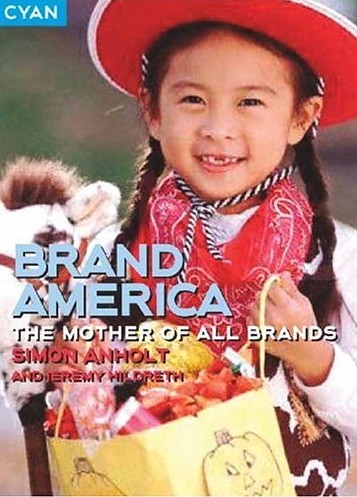Urbanism and sustainability as an element of US foreign policy: US Agency of International Development policies
Lynn Stevens of Chicago's Peopling Places blog points us to a post on the USAID website, "Help Shape USAID Policy on Sustainable Urban Living," that outlines a different way for USAID to shape its approach to how it does international development projects.
This is an important element of US foreign policy and it should be changed to be both pro-urban and pro-rural, and pro-sustainable, and pro-preservation, and at the same time, promote US "brand" objectives in terms of what is called public diplomacy.
Of course, mostly what the US has exported in terms of the conceptions of urbanism has to do with suburbanism, sprawl, shopping malls and the reshaping of mobility systems around the automobile.
It's not always the best change strategy to say "don't do what we did, learn from us" but when you think of the destruction of economic value that has resulted from sprawl, it would be great for USAID to refocus its city development efforts towards urbanity-appropriate approaches.
Historic preservation and heritage conservation as a key element in US foreign policy
I don't really write about this much anymore, but many years ago, maybe 10, historic preservation consultant and analyst Donovan Rypkema spoke at a National Trust for Historic Preservation conference about historic preservation and culture as a key element of the way that the US presents itself to the world and as an element then of what some call "public diplomacy." (This is my terming of his presentation, not his.) He's gone on to reshape much of his consulting efforts around international historic preservation matters.
It's a powerful argument.
This isn't the particular speech I am thinking about, but these pieces from 2008 extend the argument:
-- Historic Preservation and America in the World, Part 1
-- Historic Preservation and America in the World, Part 2
-- Historic Preservation and America in the World, Part 3
Nation branding

The flip side of this argument is what Simon Anholt calls nation branding. He is a prolific author and editor and his ouevre includes the books Brand America and Places: Identity, Reputation, Attitudes and this blog entry on nation branding.
I was first introduced to his work through a 2005 article in the Boston Globe, "Re-branding America."
He is also involved with the journal Place Branding and Public Diplomacy which I make a point of checking out from time to time. (I can't remember if the Library of Congress gets it online, but I am pretty sure the online journals titles at most large universities have a master subscription to Palgrave Macmillan journals which include it--most DC area college libraries have it, including the Catholic University of America--conveniently located on the Metropolitan Branch Trail and the WMATA red line subway.)
Tourism promotion
Of course, tourism and visitation in the US has declined significantly since 9/11 because it has become harder for "foreigners" to get visas to visit the US, it's a pain to go through customs and immigration at airports, etc.
The fall off in tourism is why the US federal government is finally marketing the US as a place to visit, despite opposition by conservatives who believe that this is a private sector function. See "Brand USA, a campaign to lure back foreign tourists — and their money" from the Washington Post.
Labels: cultural heritage/tourism, historic preservation, public diplomacy




4 Comments:
A lot to pushback on here.
1. We've talked about Georgetown as an international branding in DC, and I think there is a continued opportunity to do that. Huge international community here (largest in US), lots of rotation, and opportunity to educate foreigners on more to DC than georgetown/Cap hill.
2. Even more critical in pop-up area where traditional tourist information doesn't filter down as quickly. For example, how many foreigners at Union Market -- I'd say lower than possible. It isn't the location, it is they don't know about it.
3. How to get that information across is an open question. And you've got to build systems into it. For example, the Velib system blocked US credit card holders for a long time based on some aspect of fraud. Does bikeshare? I also brought this question up in terms of the 5a bus and having at least the ability to make change or buy a smartrip at Dulles.
4. Contra the long decline in foreign tourists, what you are seeing is a switch. Less Japanese, less Brazilians (clearly a visa issue), more Chinese and also differing European mix (less UK, more italy). So it a huge change, and even the type is different (more Chinese tour groups, no Japanese tour groups, lots of Japanese two girls pairs doing the country together).
5. Public Diplomacy is a huge term of art. I don't think where USAID is spending money ('stans, etc) they care but I'd suspect tremendous interest in China/India on how US does urban planning. Trust me, after taking high level delegations around DC (from India) the single most impressive thing is street cleaning machines.
... I was worried when you said pushback. I thought of the line by Virginia Woolf when someone said to her she was disserved by a lack of good criticism. Her response: "Criticism?! An artist wants praise. Praise!"
anyway, all good points. (As usual.) Thank you.
Right, touche.
And the various Dutch/Danish cycling expertise tours as an exercise in public diplomacy as well.
It is hard to do it right when you are dealing with subcultures, but here are some ideas:
http://tmagazine.blogs.nytimes.com/2013/03/17/brooklyn-the-brand/?WT.mc_id=TM-D-I-NYT-MOD-MOD-M297A-ROS-0313-HDR&WT.mc_ev=click&WT.mc_c=211728
http://newyork.grubstreet.com/2013/02/brooklyn-influence-brewery-in-sweden.html
and you might appreciate this (motor city)
http://wheresmandyandnate.blogspot.com/2010/07/vasteras-sweden-biggest-american.html
Thanks for giving this helpful information about Urbanism and sustainability as an element of US foreign policy.
Visit here-Online Generic Store.
Post a Comment
<< Home